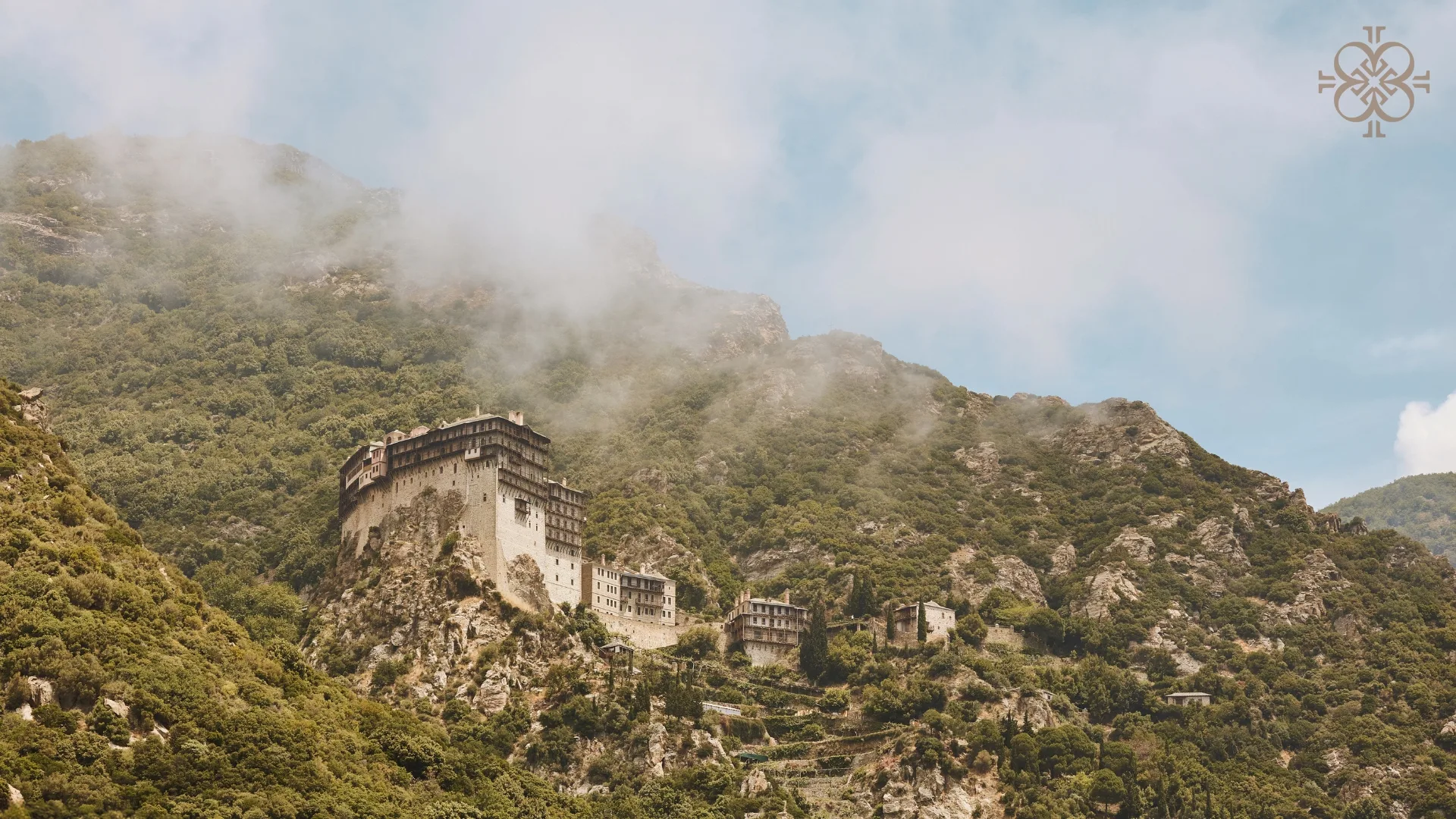The Holy Mount Athos: Everything You Need to Know

Nestled on the Athos peninsula in northeastern Greece, Mount Athos stands as a pivotal hub for Eastern Orthodox monasticism. Inhabited by 2000 monks, the holy Mount Athos constitutes one of the most important Christian spiritutal centres, including 20 monasteries.
According to the Athonite tradition, the Blessed Virgin Mary was overwhelmed by the mountain’s wonderful and wild natural beauty, she blessed it and asked her Son for it to be her garden.
For more than 1,000 years, the Athonian State prohibits the entrance to females as only Virgin Mary represents the gender on Mount Athos.
The current article provides a comprehensive guide on everything you need to know about the Holy Mount Athos.
1. The religious significance of Mount Athos
Mount Athos in Orthodox Christianity
Mount Athos holds a special place in Orthodox Christianity. Known as the “Garden of the Virgin Mary,” it is dedicated to the Mother of God, who, according to tradition, blessed the land when she visited the peninsula. This sacred connection is why women are not permitted to enter Mount Athos, preserving its monastic purity.
Monastic Life and Practices
Monastic life on Mount Athos is characterized by prayer, contemplation, and manual labor. The monks follow a strict daily schedule that includes communal worship, personal prayer, and various work tasks. The spiritual practices of Athonite monks have profoundly influenced Orthodox monasticism worldwide.
2. The Monasteries of Mount Athos
Overview of the Monasteries
Mount Athos is home to 20 sovereign monasteries, each with its own unique history, traditions, and architecture. These monasteries are autonomous, yet they function as a collective republic under the spiritual jurisdiction of the Ecumenical Patriarchate of Constantinople.
The Great Lavra Monastery
Founded in 963 AD by Saint Athanasius, the Great Lavra is the oldest and most prominent monastery on Mount Athos. It has played a pivotal role in the development of Athonite monasticism and houses invaluable religious relics, manuscripts, and icons.
The Monastery of Vatopedi
Another significant monastery, Vatopedi, was established in the late 10th century. It is renowned for its extensive library, housing over 2,000 manuscripts, and its beautiful architecture, featuring a mix of Byzantine and post-Byzantine elements.
Other Significant Monasteries
Other notable monasteries include the Monastery of Iviron, known for its miraculous icons; the Monastery of Hilandar, a center of Serbian monasticism; and the Monastery of Simonopetra, perched dramatically on a cliff overlooking the sea.
Each monastery has its own rich history and contributions to the spiritual and cultural heritage of Mount Athos. In total the monasteries are:
- Great Lavra (Μεγίστη Λαύρα)
- Vatopedi (Βατοπέδι)
- Iviron (Ιβήρων)
- Chilandari (Χιλανδαρίου) – Serbian
- Dionysiou (Διονυσίου)
- Koutloumousiou (Κουτλουμουσίου)
- Pantokratoros (Παντοκράτορος)
- Xiropotamou (Ξηροποτάμου)
- Zographou (Ζωγράφου) – Bulgarian
- Docheiariou (Δοχειαρίου)
- Karacallou (Καρακάλλου)
- Philotheou (Φιλοθέου)
- Simonos Petras (Σίμωνος Πέτρας)
- St. Paul’s (Αγίου Παύλου)
- Stavronikita (Σταυρονικήτα)
- Xenophontos (Ξενοφώντος)
- Grigoriou (Γρηγορίου)
- St. Panteleimon (Αγίου Παντελεήμονος) – Russian
- Kastamonitou (Κασταμονίτου)
- Esphigmenou (Εσφιγμένου)
3. Historical Background
Early History
The history of Mount Athos dates back to ancient times. Initially inhabited by pagans, the area gradually became a refuge for Christian hermits and ascetics around the 4th century. By the 9th century, organized monastic life began to take shape, attracting monks from all over the Byzantine Empire.
Byzantine Era
The Byzantine era marked the golden age of Mount Athos. In 963 AD, Saint Athanasius the Athonite founded the Great Lavra Monastery, setting a precedent for communal monasticism on the peninsula. Over the centuries, Mount Athos flourished with the support of Byzantine emperors and became a major center of Orthodox Christian spirituality and learning.
4. Cultural and Artistic Heritage
Iconography
Mount Athos is a treasure trove of Byzantine art, particularly noted for its exquisite iconography and frescoes. The monasteries’ walls are adorned with vivid depictions of saints, biblical scenes, and religious motifs, reflecting the deep spiritual and artistic traditions of Orthodoxy.
Manuscripts and Libraries
The monasteries of Mount Athos house some of the world’s most significant collections of manuscripts and religious texts. These libraries preserve ancient theological works, liturgical books, and historical documents, offering invaluable insights into Byzantine and post-Byzantine scholarship.
5. Mount Athos Today
Today, Mount Athos continues to be a vital spiritual and cultural center. Despite modern challenges, it remains a bastion of Orthodox monasticism, attracting pilgrims and researchers from around the world who seek to experience its unique way of life.
6. Visitor Information
Access and Restrictions
Visiting Mount Athos requires special permission due to its status as a monastic republic. Only men are allowed to enter, and visitors must obtain a permit, known as the diamonitirion, which grants access for a limited period. The number of visitors is restricted to maintain the spiritual atmosphere.
7. ANAZΩ and Mount Athos
ANAΖΩ holds a strong connection with the sacred Mount Athos as every ANAZΩ talisman is blessed within the monasteries οf the Holy Mount and since 2024, ANΑΖΩ has also established its presence in the capital of Athos, Karyes.
Borne by a unique process, each Anazo talisman voyages from the sea to the sacred Mount Athos. They journey first by boat, destined for Mount Athos, then entrusted to the donkeys that traverse the impassable paths. Anazo talismans make their way to Saint Anne’s Skete, where under the sanctified prayers of the fathers, the blessing weaves each unique piece closer to the divine, completing this particular process.
Discover more about Anazo Talismans here.